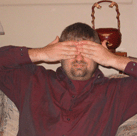Here are a few articles from last week's Greenpage that might be worth your time...
Female directors provoked and excelled in leading roles
The Boston Globe: Cher has never been one to mince words, and she offered some typically blunt reasoning as she urged participants at a January Women’s March to vote for change. “If you want a job done right,’’ she said, “get a woman.’’
That maxim seems to have supplied the working template for Boston theater in 2018. This was a year when women, prominently including women of color, directed a hefty percentage of the impactful stage productions that are likely to linger in the memory as we head into 2019.
Parents Shocked By High School Play With Ku Klux Klan Uniforms
www.theroot.com: During a brief period of incarceration when I was 12 years old, I learned some valuable life lessons. I was serving three days of in-school suspension for a locker-room fracas that broke out when I punched a classmate who called me a racial slur because I had secured the co-starring role in our junior high production of Huckleberry Finn.
A star flutist has sued the Boston Symphony Orchestra. Her case could change how orchestras pay men and women.
Washington Post: On a winter day 14 years ago, the Boston Symphony Orchestra announced that it had finally found a new principal flutist. The search had not been easy. Two hundred fifty-one players had applied, 59 were called to Symphony Hall to audition, and when it was over, only one remained.
Elizabeth Rowe, just 29, had landed in one of the country’s “big five” orchestras. And as a principal, she occupied a special seat, the classical musical equivalent of cracking the Yankees’ starting rotation.
“If I could have a dream job, this was it,” Rowe says.
The Evolving Fusion of AR, Public Art, and Virtual Public Space
AMT Lab @ CMU: Public art in commercial and recreational structures is a means to bring communities together and directly connect people with the physical space around them. Typically, public art is presented in the form of murals, sculptures, architecture, and environmental art. In addition to social bridging, public artworks can serve as identity-markers for particular locations, mediums to express distinct points of view, and vehicles to inspire personal and social change.
Suzanne Foellmer: Choreography As A Form Of Protest
The Theatre Times: Erdem Gündüz’s Standing Man was originally a response to the ban on public assembly imposed after the 2013 protests in Gezi Park in Istanbul. Gündüz just stood there, looking at the Atatürk monument and not leaving. Others later followed his example and stood next to him. The action quickly went viral on social media. Maybe it wasn’t extreme in expression, but in any case, it was a very much an act of resistance to which the police didn’t know how to respond.


No comments:
Post a Comment